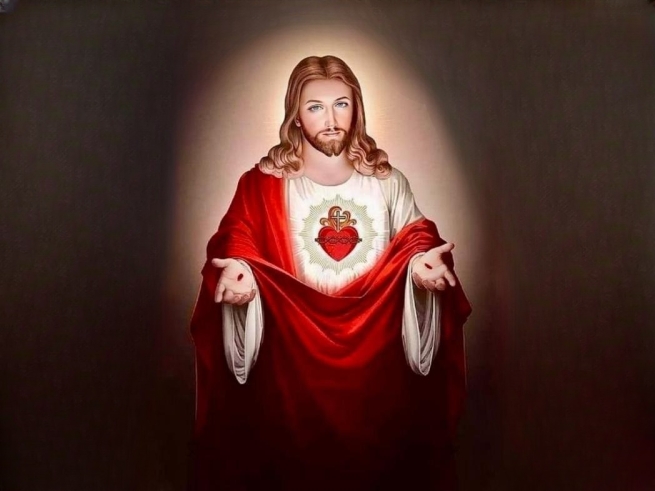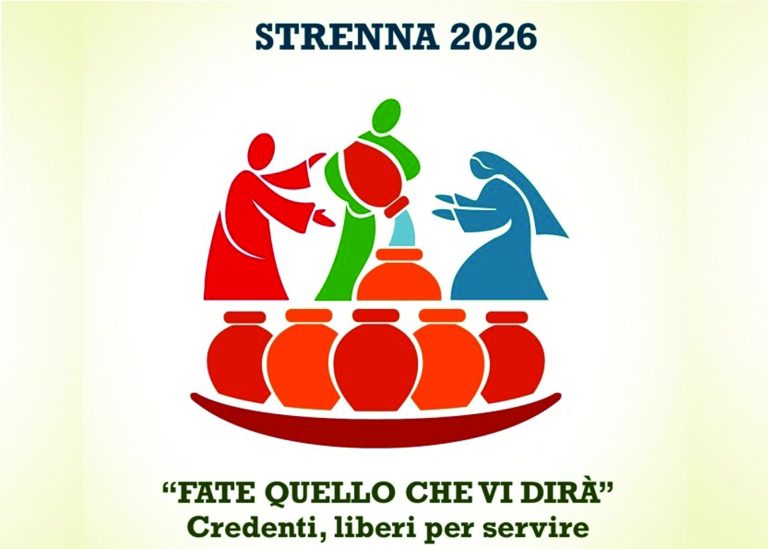
In the article in the Salesian Bulletin of May 1886 dedicated to the devotion to the Sacred Heart of Jesus the inevitable object of reflection could only be the Immaculate Heart of Mary. The exegesis thus unites two central themes of Don Bosco’s spirituality, leading the reader on a journey of deepening and understanding of the few differences and many similarities in the cult and veneration owed to one and the other.
With the arrival of the month of May, traditionally dedicated to Mary, the author of the article, Fr John Bonetti, proposes a profound reflection on the spiritual and theological link between the Heart of Jesus and the Heart of Mary. The text opens with an evocative poetic introduction comparing Mary to the dawn, a figure of purity and hope. From here begins a meditation on the value of worshipping both Hearts, seen as inseparable in the one mission of saving humanity, as well as in their participation in human suffering.
The Hearts of Jesus and Mary are presented as united by a unique bond of consonance, love and sharing in the sacrifice of the Cross. ‘Certainly between the Heart of Jesus and the Heart of Mary there is such a relationship and similarity of nature, such an intimacy of intelligence and love reigns, which could not be conceived of as greater or more perfect,’ it is stated.
The author emphasises the superhuman and at the same time fully human greatness of these two Hearts: most pure, untouched by sin, immense in love and sorrow. Their intimate union, according to Christian doctrine, is also reflected in the similar historical evolution of the cult reserved for them, albeit with a formal distinction. The Heart of Jesus is given “latria”, that is, full adoration, reserved only for God; while the Heart of Mary is given “hyperdulia”, superior to that of the Saints and Angels, but still referring to a creature.
The birth of the two devotions is traced back to 17th century France, with two humble and devout figures: St Margaret Mary Alacoque for the Sacred Heart of Jesus, and St John Eudes for the Heart of Mary. At a time marked by the beginning of Europe’s moral and religious decadence, these two devotions gradually spread to restore the link between nature and the supernatural, between humanity and divinity.
Significant, both for the stylistic elegance and the popularity of the reference, is the similarity with the river Nile, whose sources had not long been identified: just as that watercourse gradually swells and makes the lands through which it flows immensely fertile, so these two devotions restore and benefit those who come into contact with it.
In the second part of the paper, the reflection focuses on denouncing the opposition that these devotions have encountered, from the very beginning, from currents such as Jansenism and more generally from rationalist and anticlerical intellectuals. Such opponents accused these forms of piety of idolatry, misjudging the doctrinal precision and balance of Christian worship.
But this hostility should not discourage the faithful: first of all, they are almost the proof of the truthfulness and groundedness of these devotions, since difficulties, the author observes, arise ‘the prouder, the greater the good they aim to fight’; and, secondly, they must be answered with an even closer union, because if the enemies of God attack the two devotions together, the faithful must celebrate them together, recognising their unity and complementarity.
If anything good can be gleaned from these hostilities, however, it is a greater appreciation of the role of Mary and her Immaculate Heart as an opportune mediation towards Jesus and his Sacred Heart. She is the way, the ‘mirror’ that reflects the rays of her Son, she is the ‘monstrance’ that displays him: through her Heart one can come to contemplate the treasures hidden in the Heart of Jesus.
In the conclusion, the author invites the faithful to turn to her with particular fervour in the Marian month, so that she may intercede for humanity, hasten the consecration of the Church to the Heart of Jesus at the Castro Pretorio in Rome and seal forever the union between the two devotions. The text closes by evoking the Salesian churches in Rome and Turin, symbols of the Sacred Heart and Mary Help of Christians, as eternal monuments of faith and charity.


